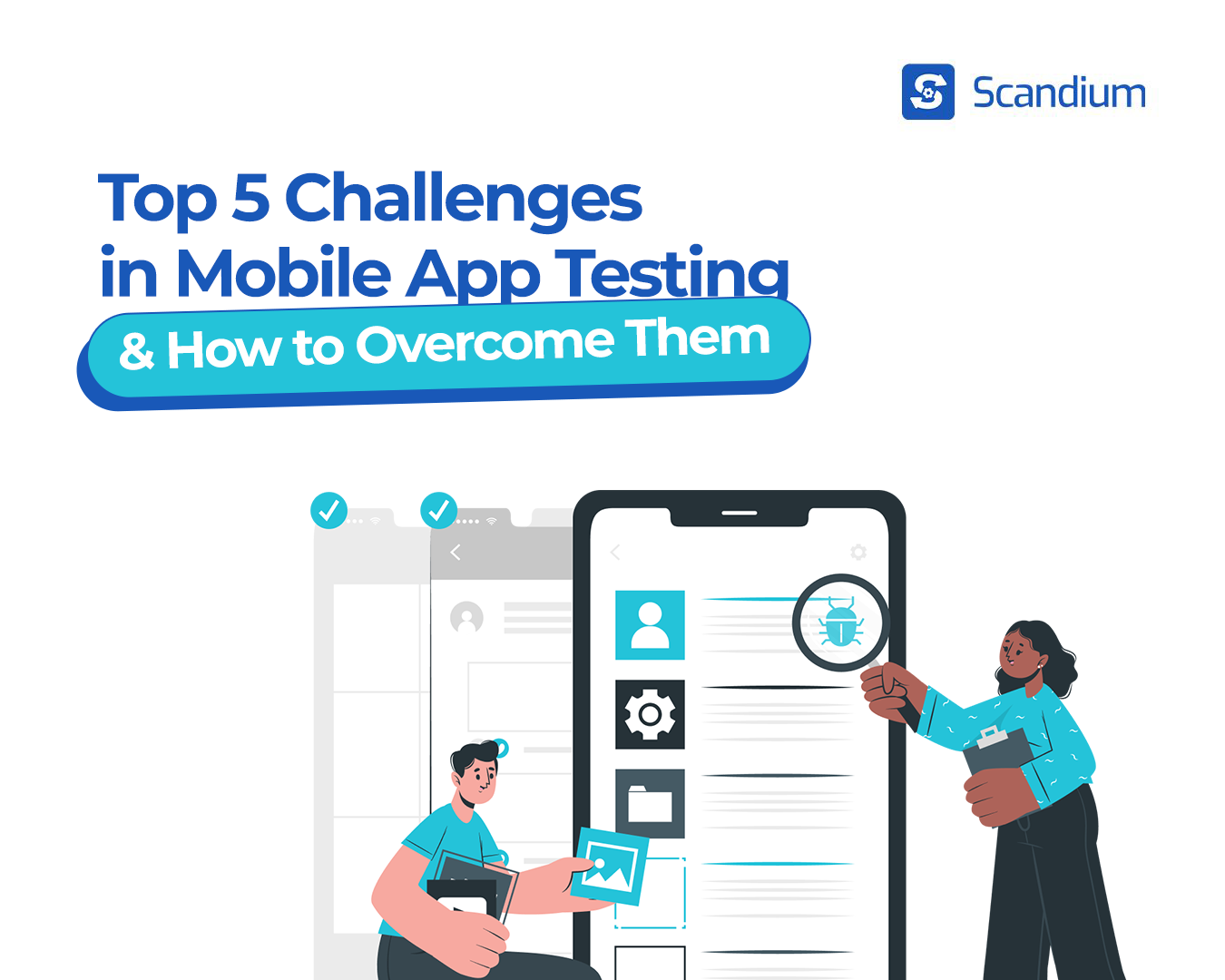
We are in the technology age where most activities are performed on mobile devices. You may not need to open your laptop to perform certain transactions anymore; all you need is a mobile app designed for that purpose. With this trend, many founders are finding it necessary to create mobile apps for their products. However, mobile apps need to be thoroughly tested before they are deployed to the market for end-users.
Mobile app testing is crucial to ensure a seamless user experience and maintain the quality of mobile applications. However, this process comes with its own set of unique challenges. In this blog post, we’ll explore the top five challenges in mobile app testing and provide practical solutions to overcome them.
1. Device Fragmentation
Challenge:
The sheer number of mobile devices, with varying screen sizes, operating systems, and hardware specifications, makes it challenging to ensure an app performs well across all platforms.
Solution:
Utilize cloud-based testing services like BrowserStack or Sauce Labs that provide access to a wide range of devices and OS versions. This enables testers to execute tests on multiple devices without having to maintain a large inventory of physical devices.
2. Network Variability
Challenge:
Mobile apps need to perform reliably under different network conditions, including varying bandwidth, latency, and connection stability. Testing under these conditions can be complex and time-consuming.
Solution:
Use network simulation tools to mimic different network conditions and test how your app behaves. Tools like Charles Proxy or Network Link Conditioner can help create different network scenarios, ensuring your app remains functional under varying conditions.
3. Operating System Updates
Challenge:
Frequent updates to mobile operating systems can introduce new bugs or change how certain features work, potentially breaking app functionality.
Solution:
Establish a continuous testing process that includes testing your app on the latest beta versions of operating systems. This proactive approach helps identify potential issues before the OS update is officially released, allowing developers to address them in advance.
4. User Interface (UI) and User Experience (UX) Consistency
Challenge:
Maintaining a consistent UI and UX across different devices and screen sizes is crucial but challenging due to varying display resolutions and aspect ratios.
Solution:
Implement responsive design principles and use automated visual testing tools like Applitools to ensure UI consistency. Regularly conduct usability testing with real users to gather feedback and make necessary adjustments to the design.
5. Security and Data Privacy
Challenge:
Mobile apps often handle sensitive user data, making security and data privacy a top concern. Ensuring the app is secure from vulnerabilities and complies with data protection regulations is challenging.
Solution:
Incorporate security testing into your regular testing process. Use tools like ZAP or Burp Suite to identify and address security vulnerabilities. Additionally, ensure compliance with data privacy regulations such as GDPR by implementing robust data protection measures and conducting regular security audits.
Conclusion
Overcoming the challenges in mobile app testing is essential to deliver a high-quality product that meets user expectations. By leveraging the right tools and adopting best practices, you can ensure your app performs well across different devices, network conditions, and operating system versions while maintaining security and data privacy.
At Scandium, we specialize in helping teams navigate these challenges with our advanced test automation solutions. Our expertise in mobile app testing ensures your app is thoroughly tested and ready for the market. Contact us today to learn more about how we can assist you in your mobile app testing journey.
